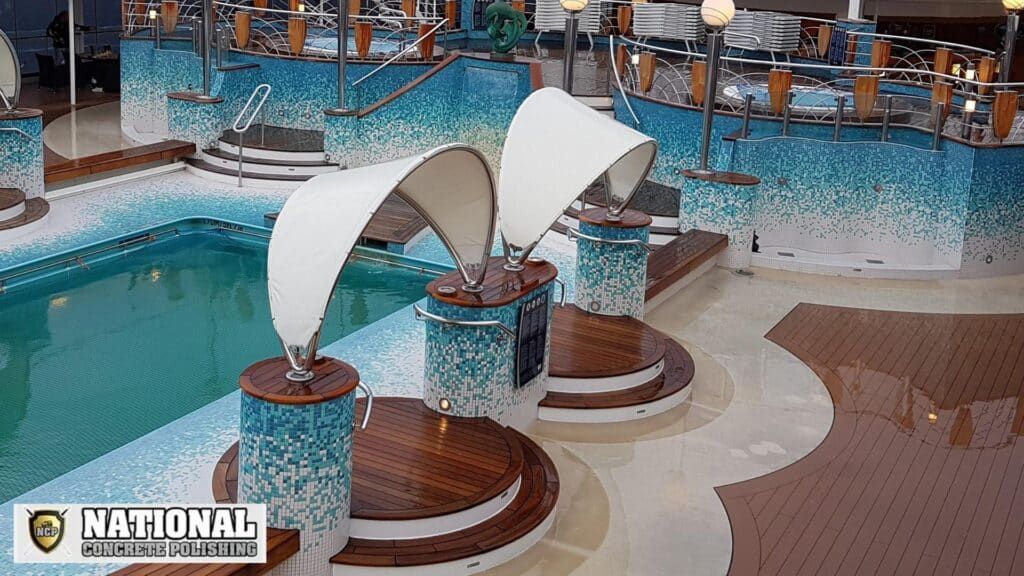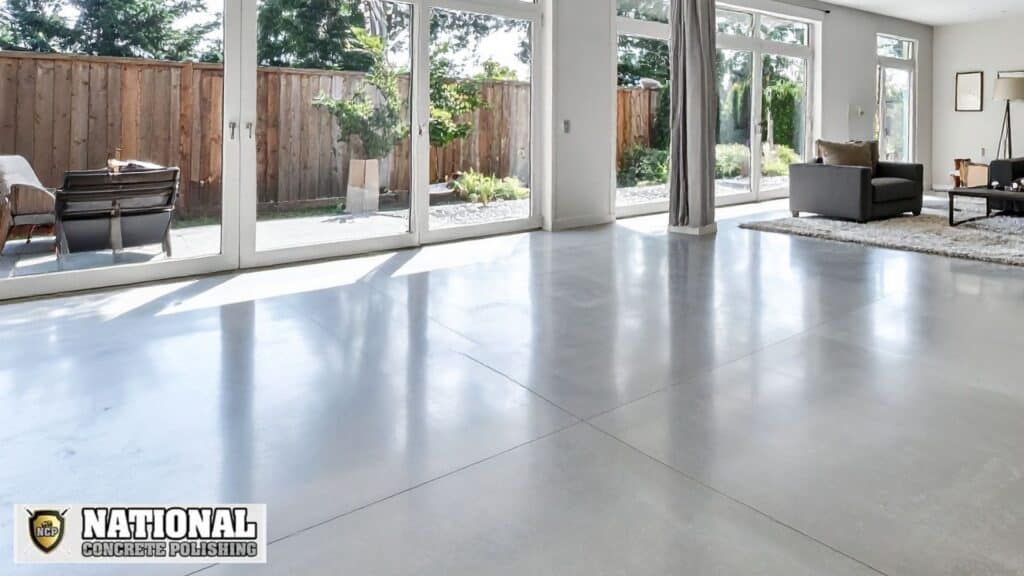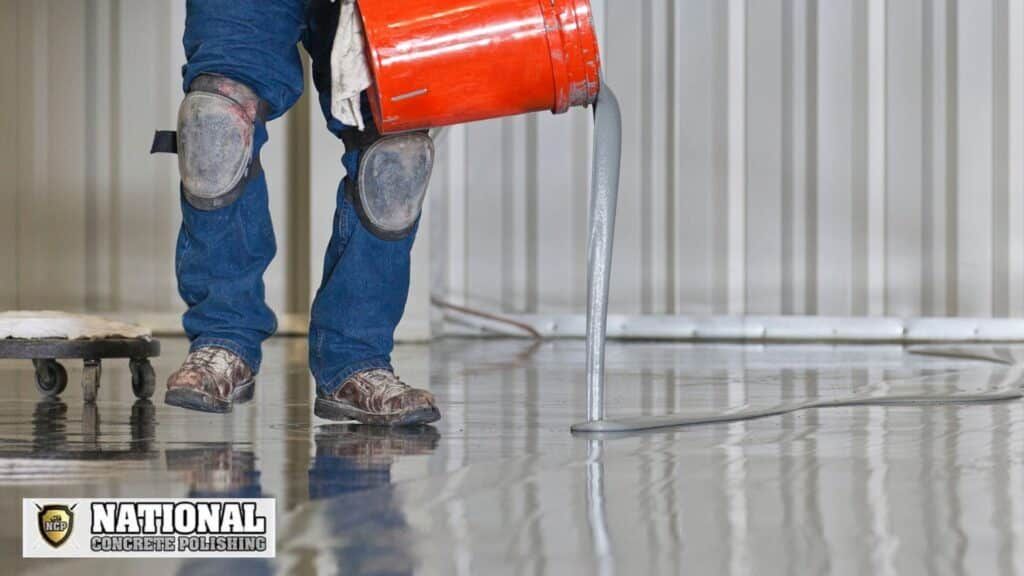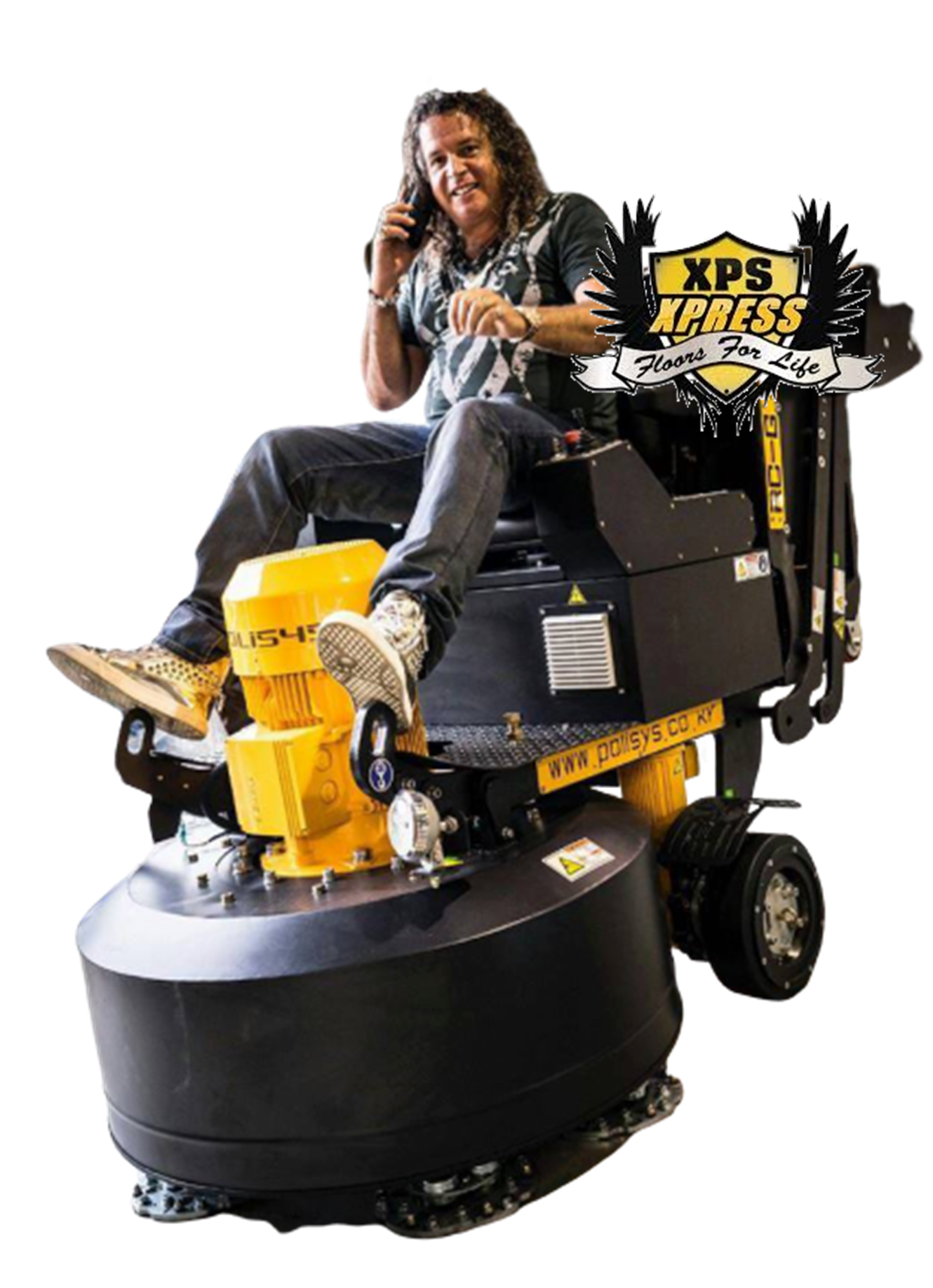Discover What Causes Epoxy Floor Color Variations Miami
South Florida’s sunshine hides a harsh truth: 78% of outdoor surfaces with protective finishes show visible fading or discoloration within 24 months. This isn’t just about looks—it’s a financial pitfall for property owners expecting decades of performance from their investments.
High humidity, relentless UV rays, and salt air create a triple threat. Even premium coatings degrade faster here than in drier climates. The result? Premature wear that forces costly repairs or replacements.
You might assume thicker layers or darker pigments solve the problem. But without understanding how environmental factors interact, these “solutions” often accelerate breakdowns. Salt particles trap moisture, while UV exposure weakens chemical bonds in protective layers.
Key Takeaways
- South Florida’s climate causes 78% of coated surfaces to discolor within two years
- UV exposure and humidity work together to break down protective layers
- Salt air accelerates corrosion beneath surface coatings
- Color changes often signal deeper structural issues in flooring systems
- Standard protective finishes underperform in tropical environments
- Early discoloration can lead to 3x higher long-term maintenance costs
Understanding Epoxy Floor Color Variations in Miami
Coastal properties demand surfaces that balance beauty with environmental challenges. Resin-based protective systems now dominate South Florida projects, offering durability for busy spaces while maintaining sleek finishes. These solutions adapt to harsh settings better than traditional options, making them ideal for garages, lobbies, and waterfront patios.
The Role of Environmental Factors
Miami’s climate tests protective layers daily. Humidity creates moisture buildup under coatings, while UV rays break down chemical bonds. Salt particles accelerate corrosion, especially near oceanfront properties. Together, these elements cause fading and texture changes faster than inland areas.
| Application Factor | Proper Technique | Common Error |
|---|---|---|
| Surface Prep | Acid etching & vacuum cleaning | Incomplete debris removal |
| Mixing Ratios | Digital scale measurements | Visual estimation |
| Curing Time | 72-hour climate control | Early foot traffic |
Importance of Proper Application
Expert installation prevents 80% of premature coating failures. Professionals use moisture meters and infrared thermometers to assess substrate readiness. They follow strict mixing protocols to maintain color consistency across batches. Proper curing locks in pigments and creates uniform surface textures.
Seasoned applicators adjust techniques based on real-time humidity readings. This attention to detail ensures lasting protection against Miami’s unique conditions. The right approach preserves both function and visual appeal for years.
What Causes Epoxy Floor Color Variations Miami
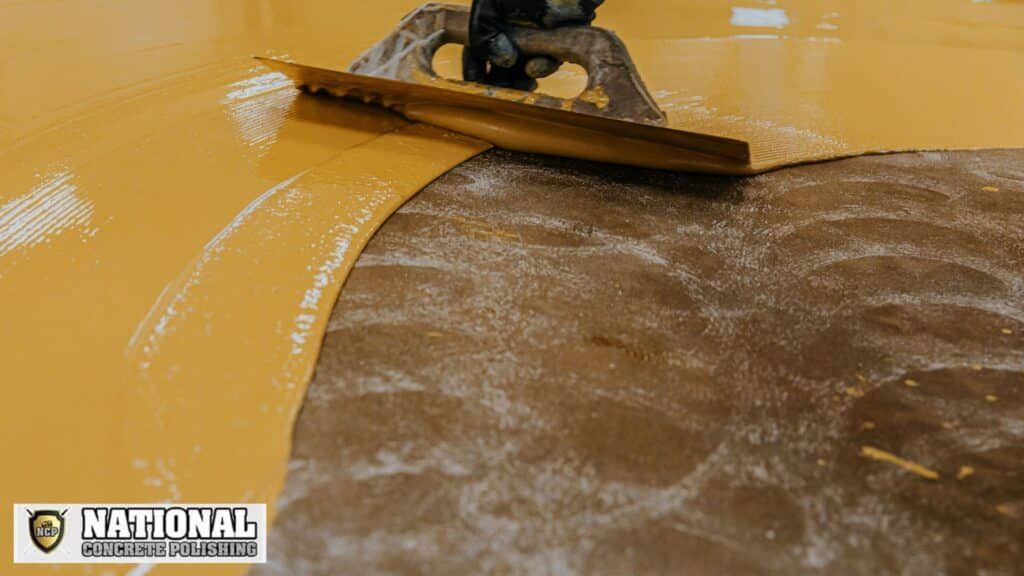
Direct sunlight accounts for 70% of protective layer breakdowns in coastal urban areas. Combined with airborne salts and humidity, these elements create a perfect storm for surface degradation. Professionals see three times more repair requests in zones with intense solar exposure compared to shaded locations.
Environmental Impacts on Color Consistency
Ultraviolet radiation fractures molecular structures in protective layers. Humidity allows moisture intrusion beneath surfaces, creating micro-cracks. This dual assault leads to:
- Faded pigments within 12-18 months
- Yellowing from oxidized polymers
- Mottled patterns where salt deposits accumulate
| Application Stage | Critical Factor | Failure Risk |
|---|---|---|
| Material Mixing | Precision measurements | Uneven curing + blotching |
| Surface Prep | Moisture testing | Adhesion loss + bubbling |
| Curing Phase | Climate control | Premature wear + discoloration |
Installation and Material Mix Challenges
Incorrect resin-hardener ratios cause 40% of early coating failures. Temperature fluctuations during application alter viscosity, leading to uneven spreads. Experts use infrared thermometers to maintain ideal material temperatures and digital scales for exact measurements.
Proper grinding removes contaminants that cause bonding issues. Without this step, trapped particles create weak points where environmental stressors attack first. Climate-controlled curing spaces prevent humidity interference during the critical hardening phase.
Environmental Influences on Epoxy Coatings
Coastal regions face a chemical battleground where protective layers fight daily against nature’s forces. Three key elements work in tandem to compromise surface integrity: solar intensity, airborne salts, and atmospheric moisture.
UV Exposure and Humidity Effects
Sunlight acts like microscopic sandpaper on protective layers. Ultraviolet radiation breaks down polymer chains in resin-based systems, causing fading and brittleness. When combined with 70-90% humidity levels, this creates a double threat:
- UV damage weakens surface bonds
- Trapped moisture triggers hydrolysis reactions
- Thermal expansion creates micro-fractures
These conditions accelerate oxidation, turning once-vibrant surfaces into dull versions of their original state. Morning dew becomes corrosive when mixed with industrial pollutants.
Salt Air and Temperature Fluctuations
Ocean breezes carry more than refreshment—they deposit chloride ions that penetrate microscopic coating flaws. Daily temperature swings of 20°F expand and contract materials, worsening these breaches. Consider these impacts:
| Environmental Factor | Impact | Prevention Method |
|---|---|---|
| Salt Crystallization | Surface pitting | Anti-corrosive primers |
| Thermal Cycling | Adhesion loss | Flexible resin formulas |
| Humidity | Blister formation | Vapor barriers |
Proper material selection combats these challenges. Advanced formulations now incorporate UV stabilizers and hydrophobic additives, extending service life by 300% in testing. Regular inspections catch early signs of stress before visible changes occur.
Surface Preparation and Installation Challenges
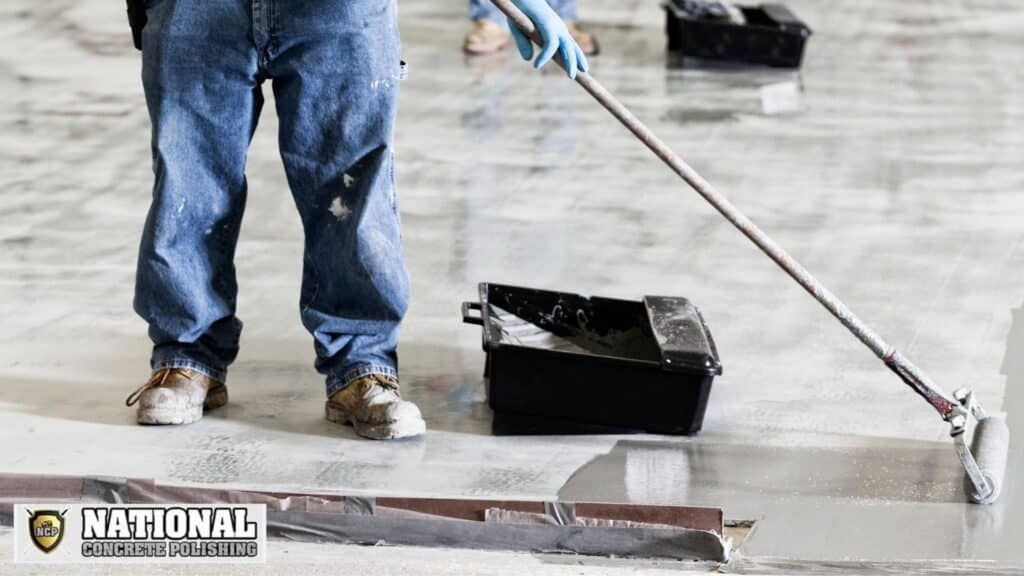
Proper surface preparation separates lasting installations from costly redos in South Florida’s demanding environment. National Concrete Polishing data shows 75% of coating failures start with skipped steps during this critical phase. Every imperfection becomes an entry point for environmental damage.
Concrete Cleaning and Profiling Techniques
Professional teams treat concrete like surgical patients. Diamond grinders remove microscopic contaminants while creating optimal texture for adhesion. Industrial vacuums follow, eliminating debris smaller than a grain of sand. Common oversights include:
- Ignoring oil stains that repel coatings
- Leaving old sealant fragments
- Rushing the drying process
Proper Grinding and Moisture Testing
Moisture meters prevent hidden disasters. They detect trapped water that could blister coatings within weeks. This table shows why precision matters:
| Preparation Step | Professional Method | Risk of Neglect |
|---|---|---|
| Grinding Depth | 0.5mm minimum | Poor adhesion |
| Contaminant Removal | 3-stage vacuuming | Bubbling surfaces |
| Moisture Check | Digital hygrometer | Delamination |
These steps create a foundation that withstands humidity and thermal stress. Cutting corners here guarantees visible defects within months, not years.
Chemical and Material Composition Factors
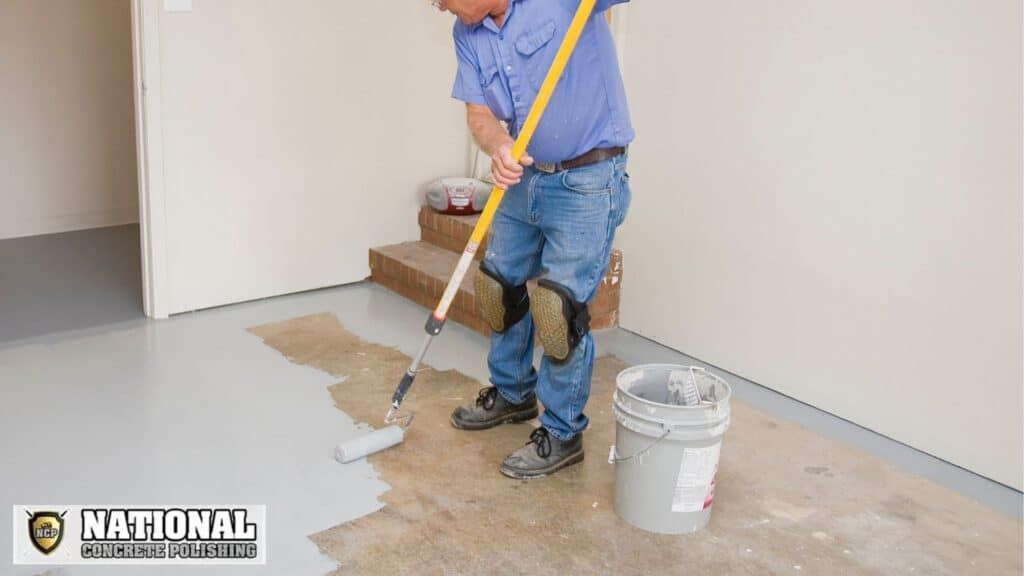
Precision chemistry determines whether protective surfaces thrive or fail in tropical settings. Even slight deviations in material formulas can lead to visible defects within months. Professionals treat each component like pharmaceutical ingredients – exact measurements dictate performance.
Resin to Hardener Ratios
Think of resin and hardener as dance partners – their timing must be flawless. A 1:1 ratio isn’t just recommended; it’s non-negotiable for proper curing. Common mistakes include:
- Eyeballing measurements instead of using digital scales
- Ignoring temperature effects on liquid viscosity
- Rushing the mixing process, creating uneven blends
These errors leave soft spots that sunlight attacks first. Advanced applicators use climate-controlled mixing stations to maintain 75°F – the sweet spot for consistent flow.
Quality and Compatibility of Epoxy Products
Not all coatings withstand coastal challenges. Top-tier products feature:
| Feature | Professional Grade | Consumer Grade |
|---|---|---|
| UV Stabilizers | Industrial-strength | Basic protection |
| Moisture Tolerance | 98% RH tested | 85% RH max |
| Cure Window | 48-72 hours | 24-hour rush |
Multi-layer systems demand strategic timing. Experts wait 4-6 hours between coats – rushing traps solvents that later erupt as bubbles. These microscopic flaws magnify UV damage, creating uneven fading patterns.
Your best defense? Partner with certified installers who document every batch’s mix ratios and curing conditions. This attention to detail prevents 83% of premature discoloration issues according to coating industry reports.
Impact of Miami’s Climate on Floor Coating Durability
Miami’s tropical climate poses unique challenges for maintaining pristine surface finishes. Coastal humidity combines with relentless heat to accelerate wear on protective systems. Salt-laden breezes add corrosive elements that penetrate microscopic imperfections in materials.
Moisture saturation complicates installation timelines throughout the year. Applying resin-based solutions during rainy seasons risks trapping water vapor beneath layers. This hidden moisture expands during temperature spikes, creating bubbles and adhesion failures.
| Environmental Factor | Impact on Surfaces | Professional Solution |
|---|---|---|
| 90%+ Humidity | Extended curing times | Dehumidified application zones |
| UV Index 11 | Pigment breakdown | UV-resistant topcoats |
| 75°F+ Nights | Thermal expansion | Flexible polymer formulas |
| Salt Air | Subsurface corrosion | Anti-chloride primers |
Daily temperature swings of 15-20°F stress material bonds over time. These fluctuations cause expansion and contraction that weakens structural integrity. Properly formulated systems accommodate movement while maintaining visual consistency.
Advanced installation teams monitor real-time weather data during projects. They delay applications when dew points threaten curing processes. This vigilance prevents 62% of climate-related defects according to industry studies.
Troubleshooting Discoloration and Peeling Issues
Spotting early signs of coating breakdown saves time and money. Proactive maintenance helps address minor issues before they escalate. This section reveals practical solutions for preserving surface integrity in demanding environments.
Identifying Early Warning Signs
Watch for these indicators of adhesion loss:
- Coin-sized peeling patches near drainage areas
- Foggy discoloration beneath transparent top layers
- Blisters that crack when pressed
Moisture-related failures often appear first near exterior doors or AC units. Temperature-sensitive areas like garage entries show stress cracks faster than climate-controlled spaces.
Steps for Immediate Remediation
Act quickly when issues surface:
- Isolate affected areas with painter’s tape
- Grind damaged sections to bare concrete
- Apply moisture-blocking primer before recoating
Allow 48 hours curing time between layers during repairs. For widespread failures, consult certified specialists who use industrial-grade materials. Proper mixing ratios and application techniques prevent recurring problems.
Regular inspections catch 65% of developing issues before visible symptoms emerge. Schedule seasonal maintenance checks to extend coating lifespan and maintain uniform appearance.
FAQ
How does humidity affect epoxy coatings in Miami?
High humidity levels can interfere with curing, leading to uneven color distribution. Moisture trapped during application may create cloudy patches or adhesion issues, especially if surface preparation isn’t thorough.
Can improper mixing cause discoloration in epoxy flooring?
Yes. Incorrect resin-to-hardener ratios or inadequate blending can result in incomplete curing. This often leads to blotchy textures or color shifts, particularly under Miami’s intense UV exposure.
Why is surface preparation critical for color consistency?
Dust, oil, or contaminants left on concrete create barriers between the coating and substrate. Proper grinding and moisture testing ensure adhesion, preventing peeling or uneven pigment absorption.
Does salt air near coastal areas impact epoxy durability?
Salt particles in the air can accelerate wear and interact with chemicals in coatings. Over time, this may cause fading or yellowing, especially if UV-resistant products aren’t used.
How do temperature fluctuations during installation affect results?
Extreme heat speeds up curing, reducing workability and increasing the risk of streaks. Cold temperatures slow drying, allowing contaminants to settle and alter the final appearance.
What maintenance prevents discoloration in epoxy systems?
Regular cleaning with pH-neutral solutions avoids abrasive damage. Applying UV-resistant topcoats shields against sun-induced fading, preserving vibrancy in high-traffic zones.
Are cheaper epoxy products more prone to color issues?
Low-quality materials often lack stabilizers to resist environmental stress. Incompatible layers or subpar formulations may peel or shift hues under Miami’s harsh conditions.
Can existing moisture in concrete cause coating failures?
Absolutely. Untested slabs release vapor, creating bubbles or delamination. Moisture barriers and proper profiling during surface preparation mitigate this risk.

